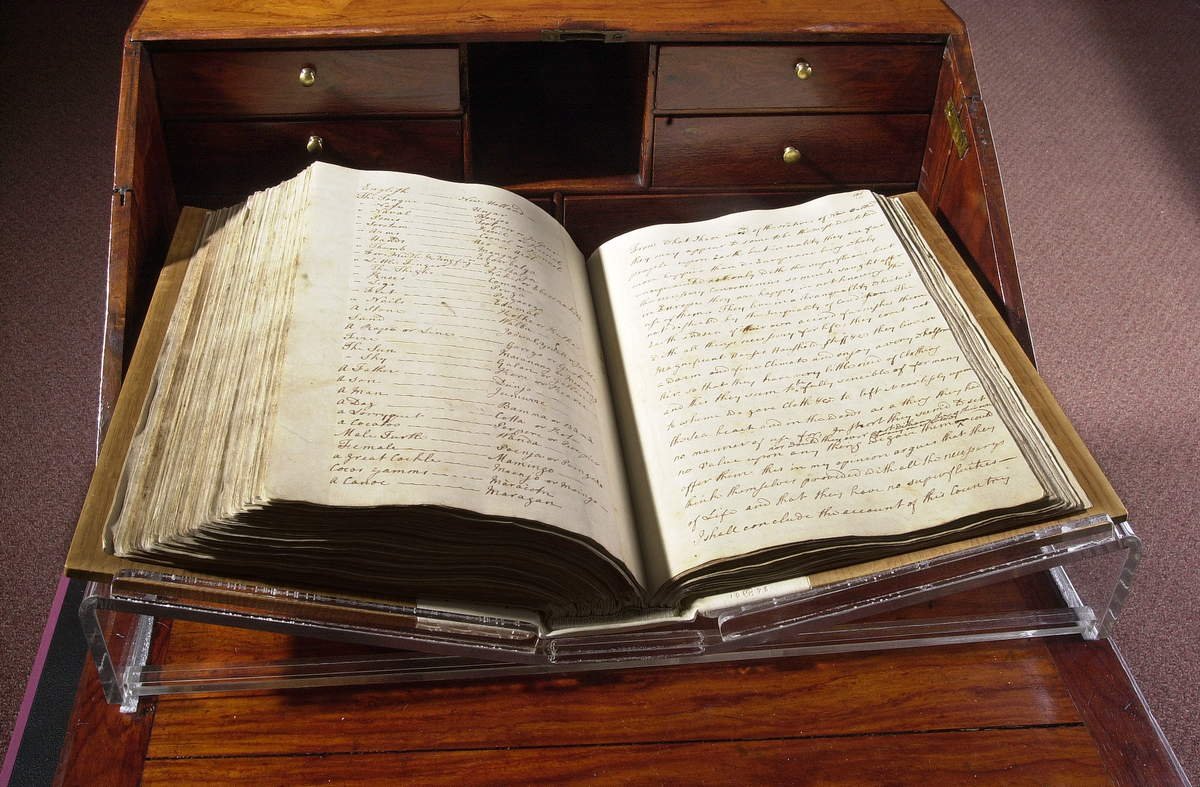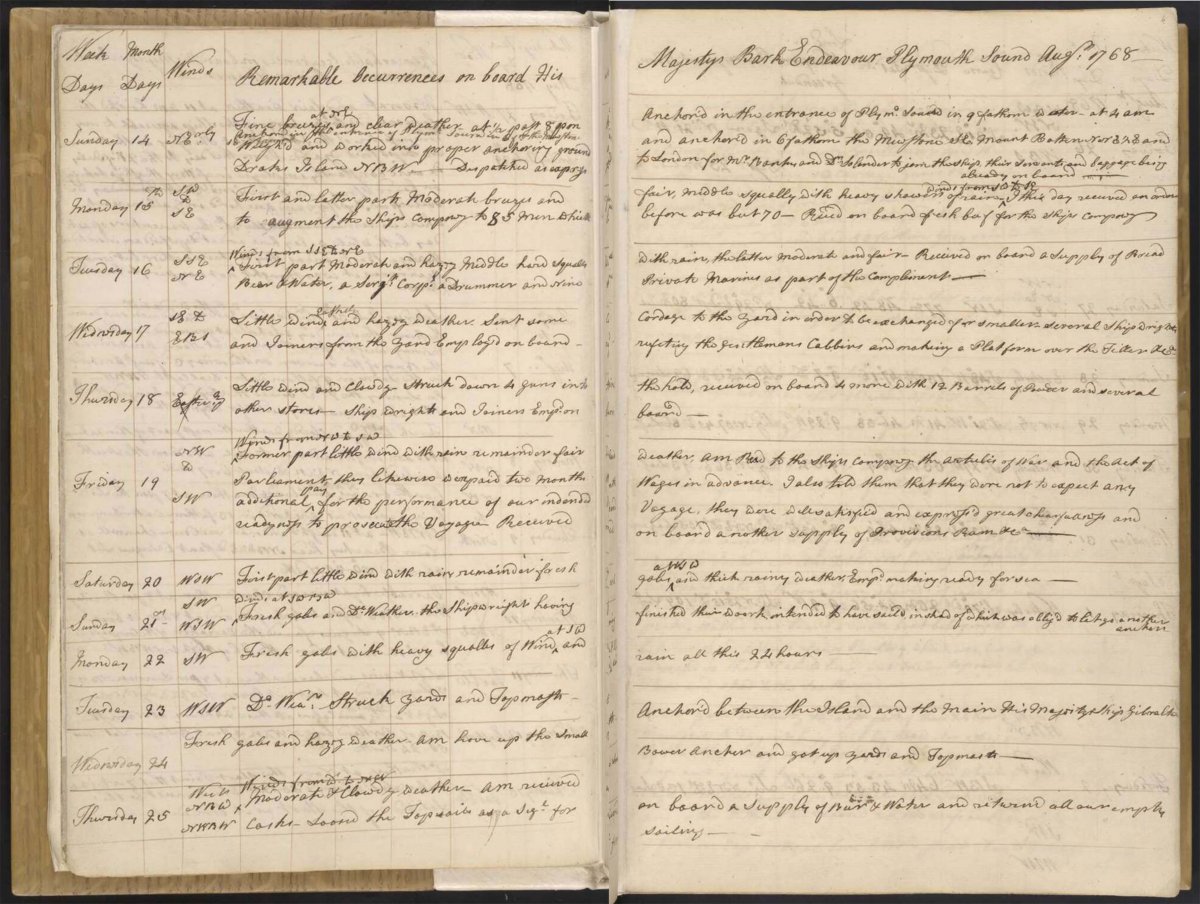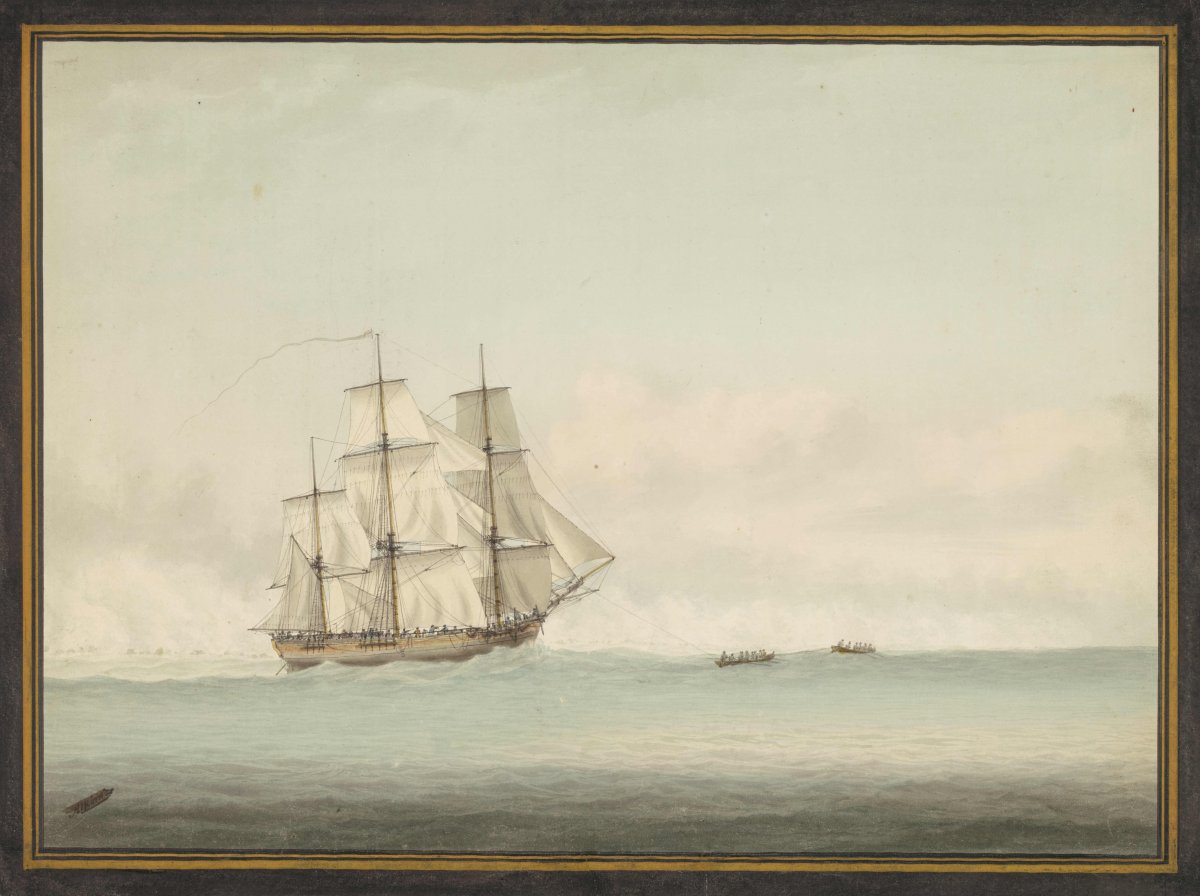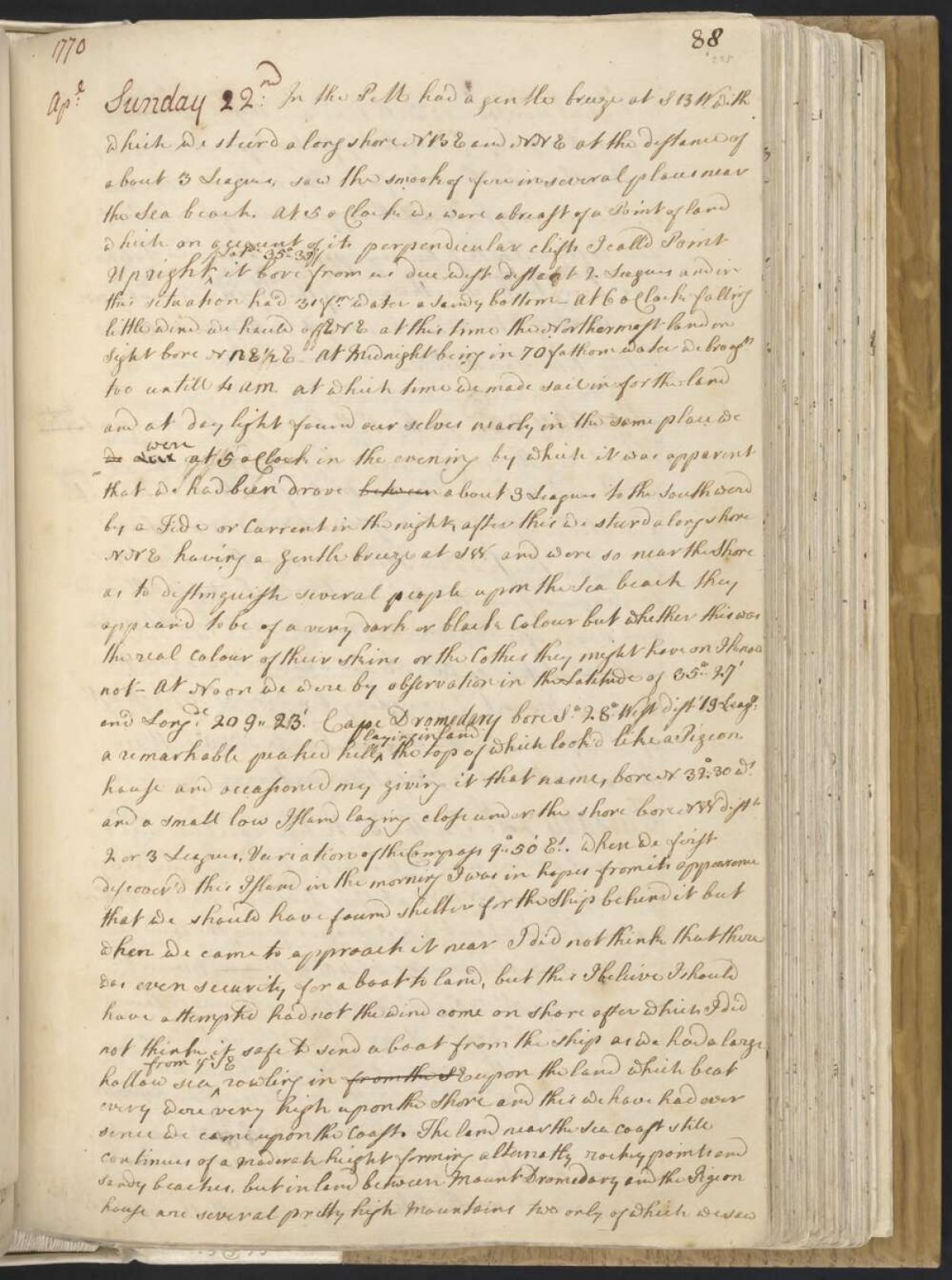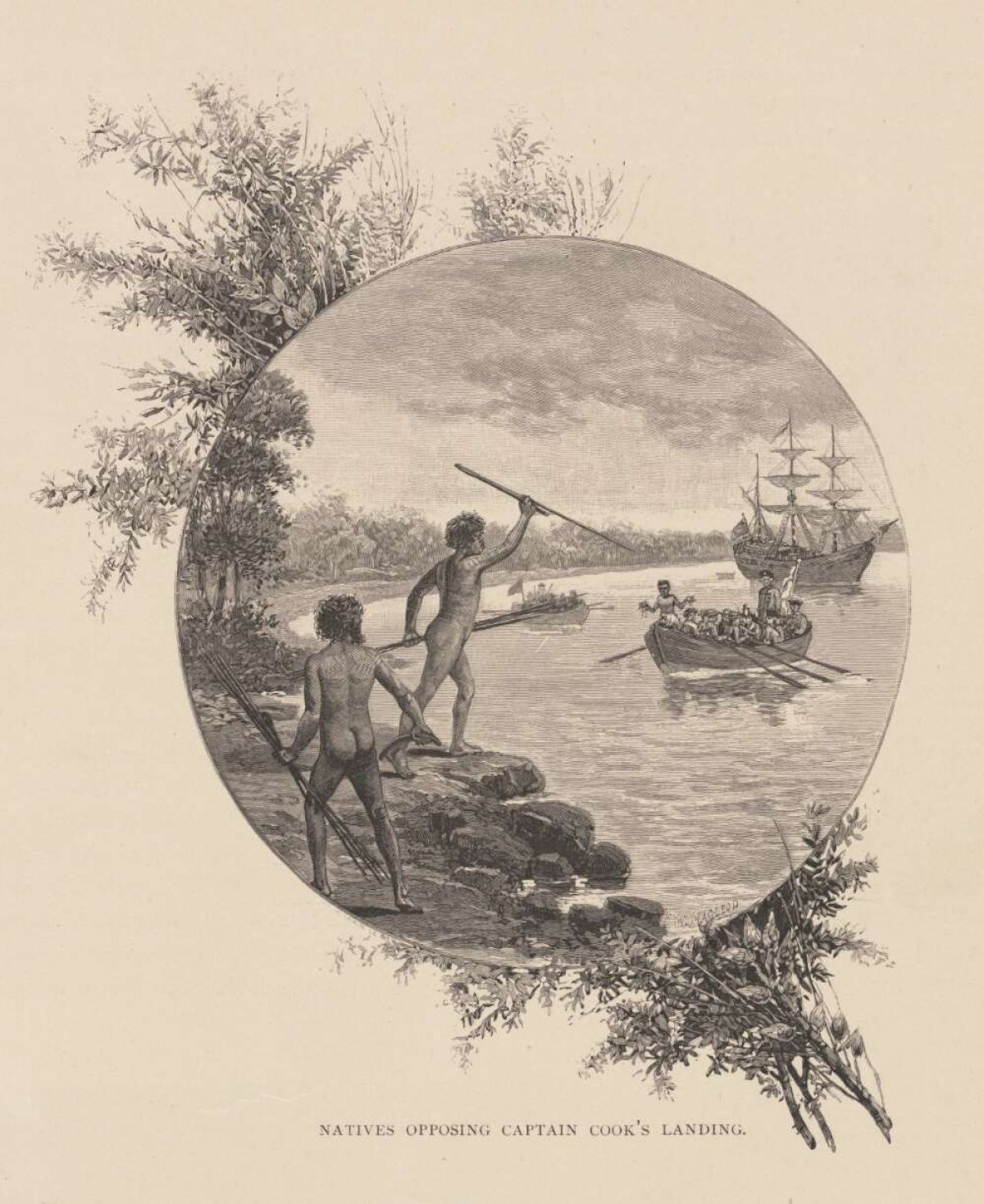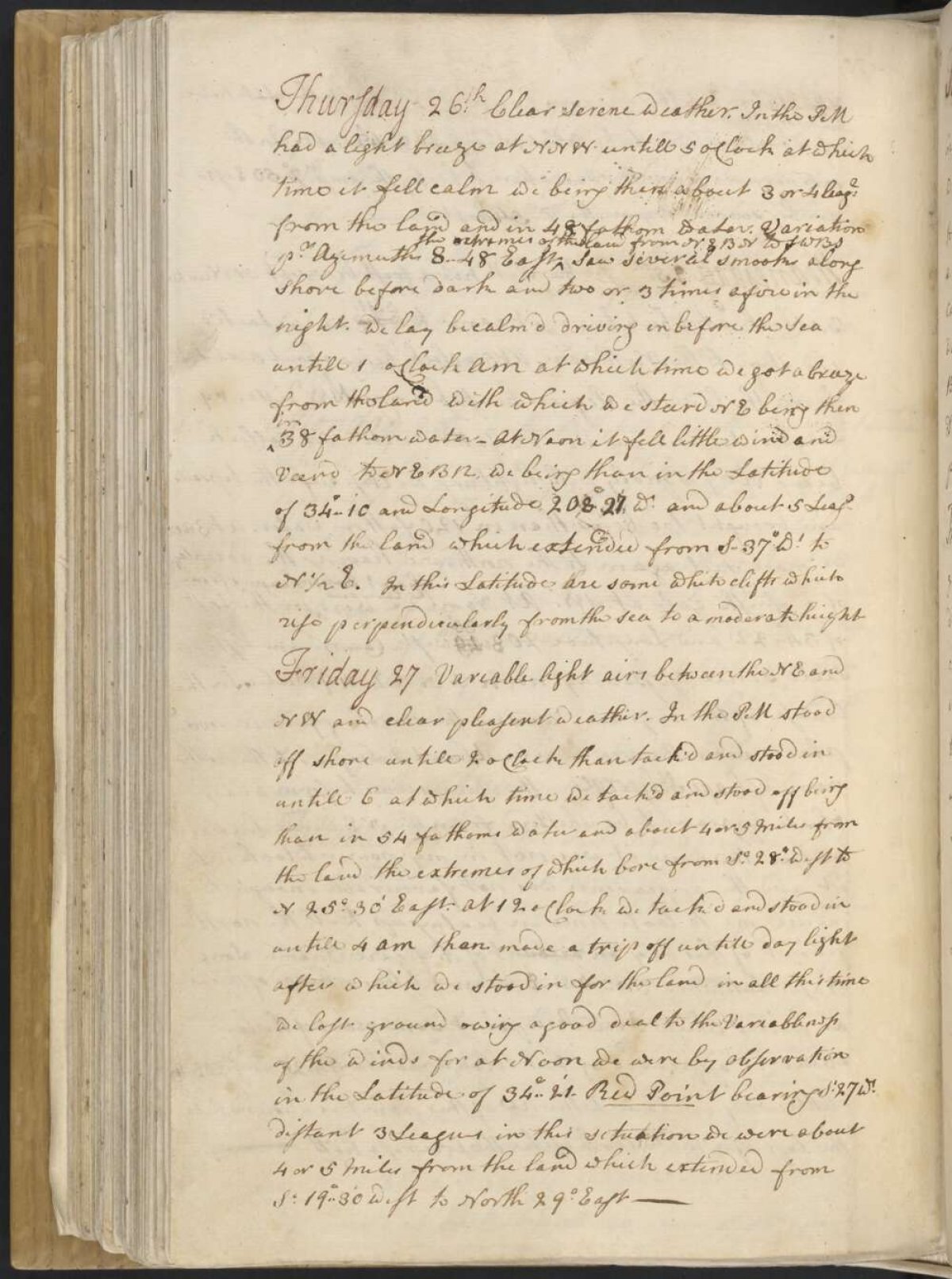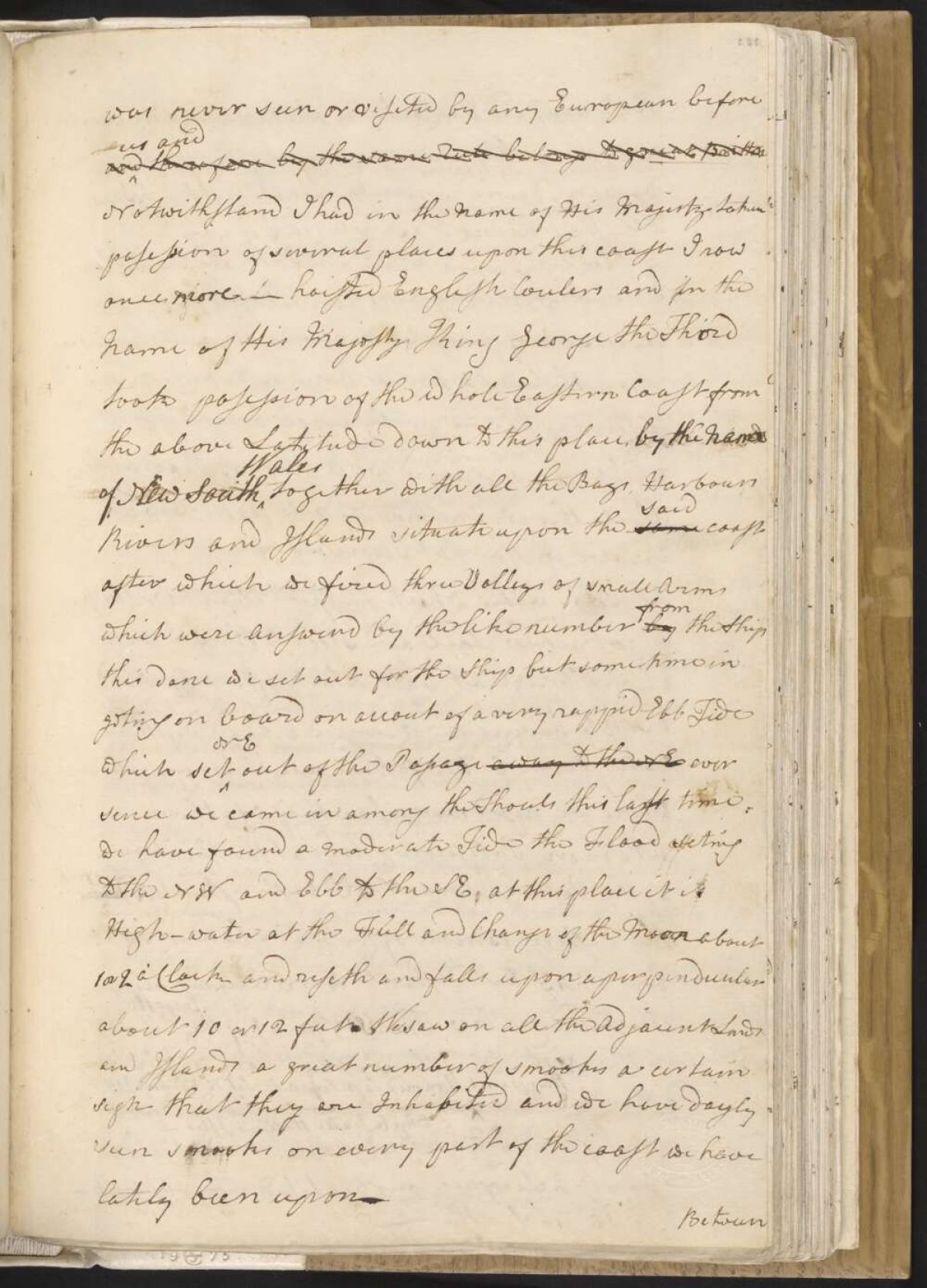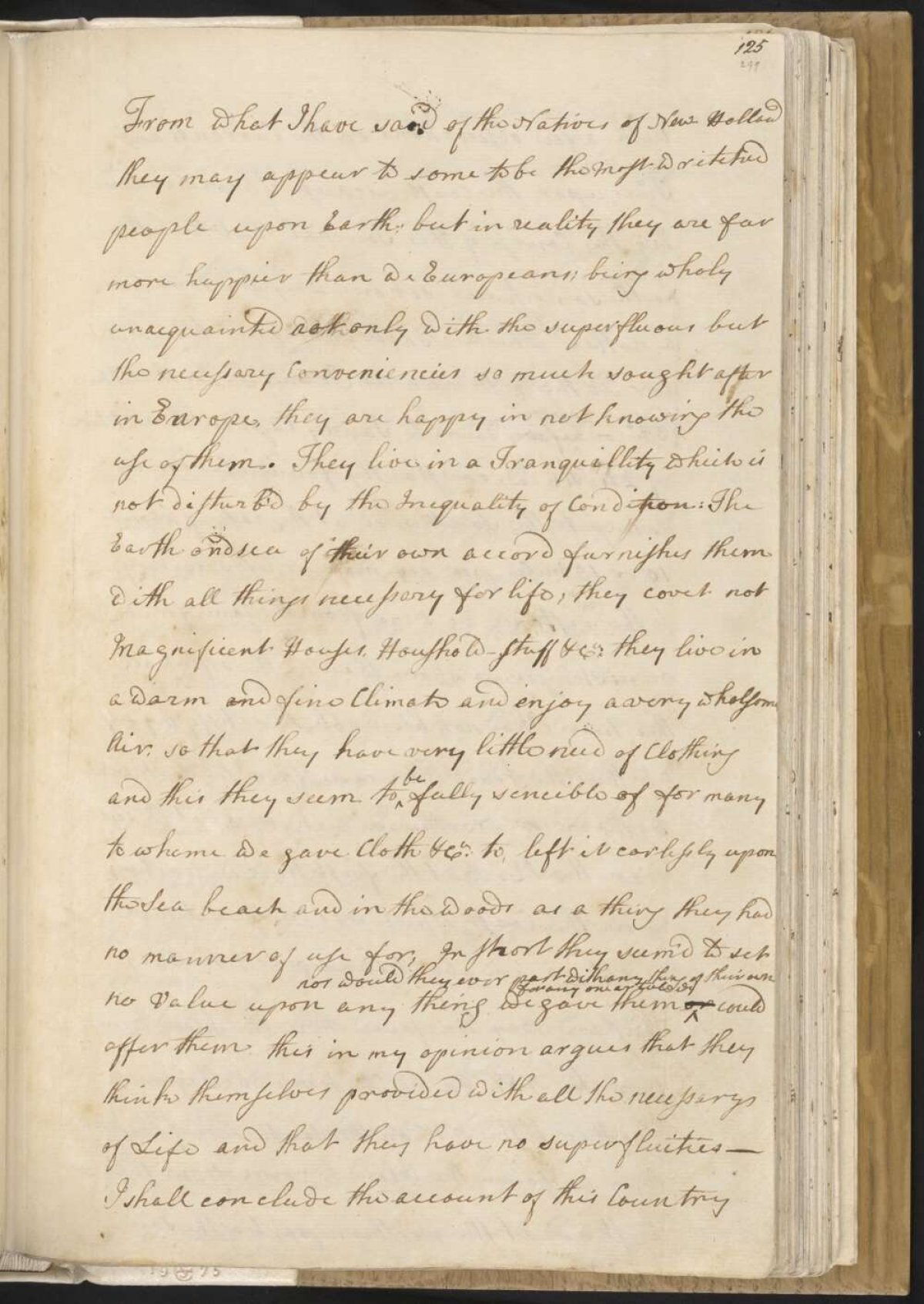Lieutenant James Cook’s 753-page account of the voyage of His Majesty’s Bark Endeavour (also known as HMS Endeavour) from 1768 to 1771 is the story of one of history’s greatest journeys of discovery. By the end of the epic voyage, Cook had charted the coastlines of New Zealand and eastern Australia. His gifted botanists Joseph Banks and Daniel Solander had increased the tally of plant species known to Western science by 10%.
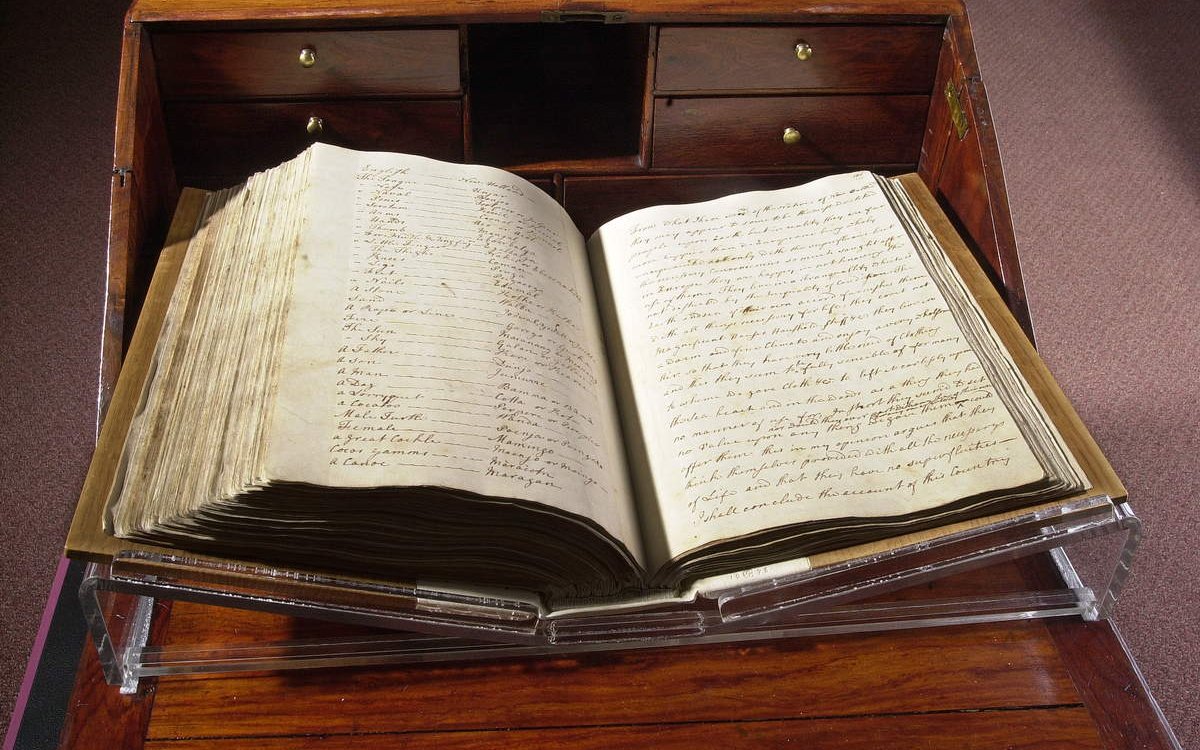
Cook, James, 1728-1779 & Hutchinson, John & Wallis, Samuel, 1728-1795 & Bolckow, Henry William Ferdinand, 1806-1878. (1768). Journal of H.M.S. Endeavour, 1768-1771 [manuscript]. http://nla.gov.au/nla.obj-228958440
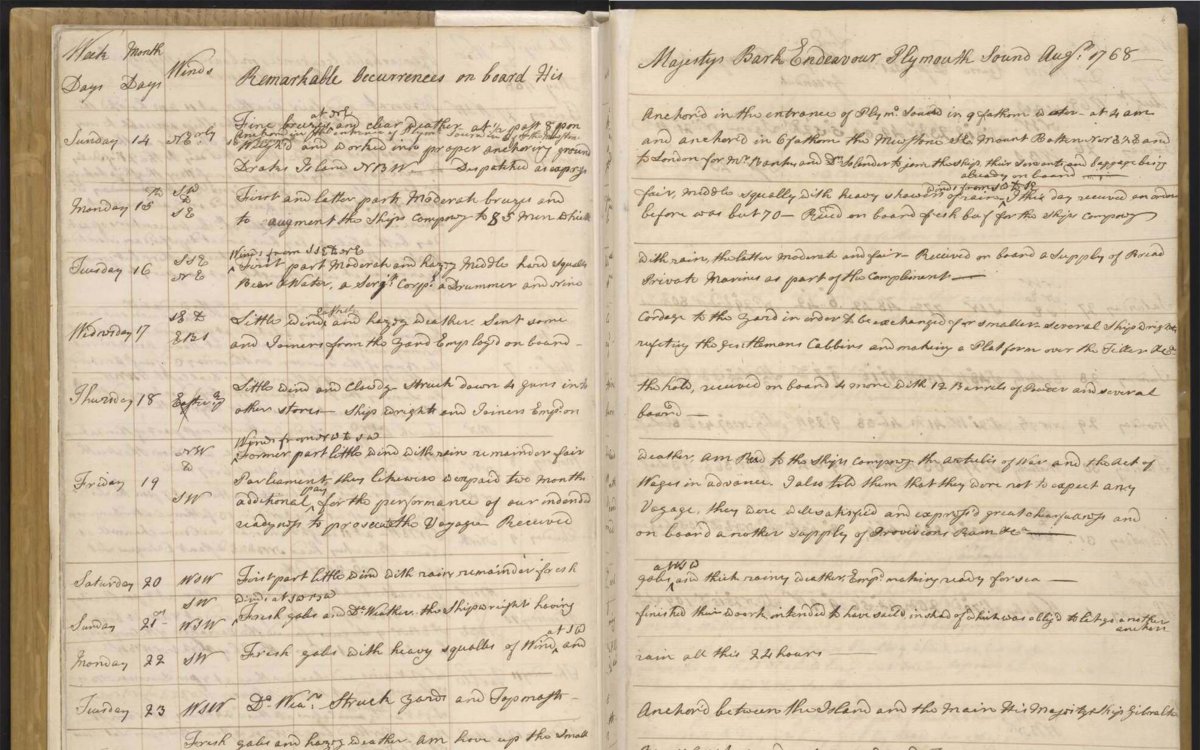
Cook, James, 1728-1779 & Hutchinson, John & Wallis, Samuel, 1728-1795 & Bolckow, Henry William Ferdinand, 1806-1878. (1768). Journal of H.M.S. Endeavour, 1768-1771 [manuscript]. http://nla.gov.au/nla.obj-228958440
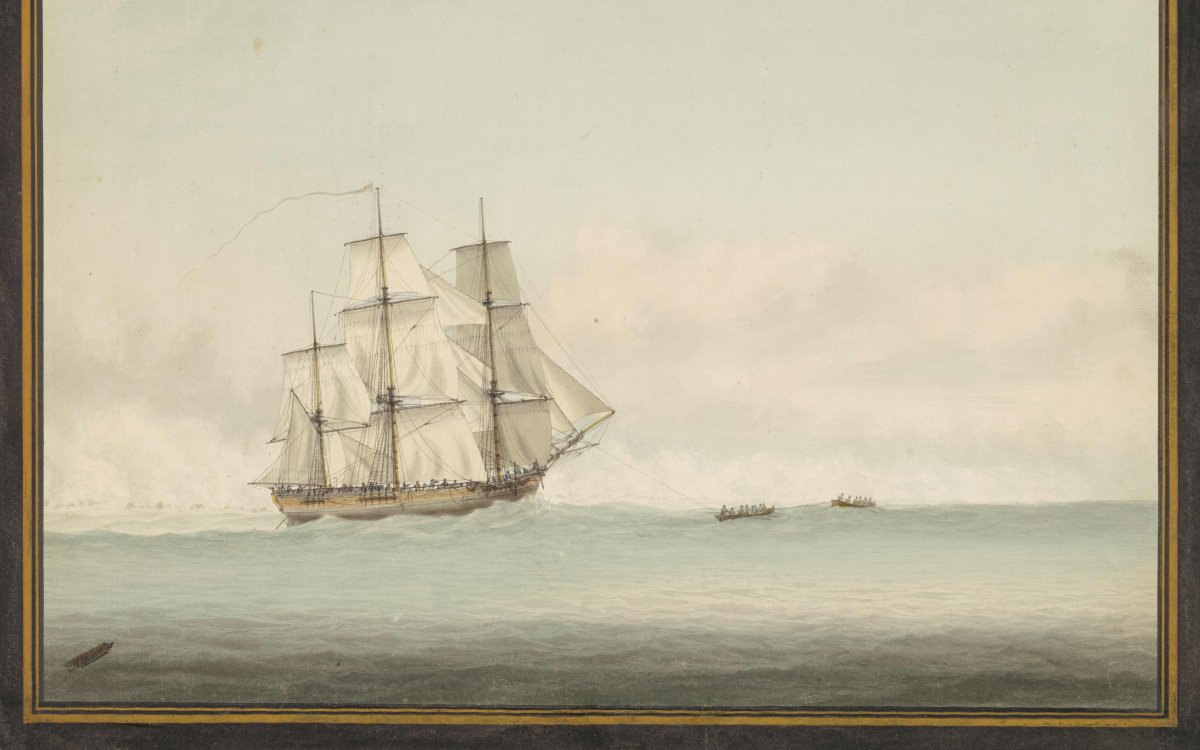
Atkins, Samuel, active 1787-1808. (1794). HMS Endeavour off the coast of New Holland [picture] / Atkins. http://nla.gov.au/nla.obj-135273911
After the Endeavour set sail from Plymouth on 26 August 1768, Cook used his journal like a logbook, in which he officially recorded every prosaic detail of the expedition, such as wind, weather, bearing, course and distance travelled. As the months passed and the miles wore on, however, he would occasionally write more creatively and express his point of view about what he was observing. Cook would also copy into the journal Joseph Banks’ written accounts of his own observations.
Cook was an experienced maritime officer, but less skilled in the art of writing than Banks. His peculiar spelling owed much to his strong Yorkshire accent and his expression could lack elegance. He would often return to an entry later and make corrections to his original text, adding second thoughts in the margins or on small pieces of paper that were stuck between the pages of the journal.
The journal records the voyage of discovery in minute and engaging detail. It covers topics such as astronomy, nutrition at sea, problems of mapping and navigation, details of natural history, and the temperaments of the crew.
Cook also recorded the details of a series of momentous events, such as his painstaking mapping of New Zealand and eastern Australia, and the near-disastrous foundering of the Endeavour on the Great Barrier Reef on 11 June 1770.
This accident occurred because, by June, Cook was of the opinion that the expedition was running behind schedule. With this in mind, he made the dangerous decision to travel at night. All was well until the ship struck a coral reef on what is now known as the Great Barrier Reef. It took 24 hours to refloat the Endeavour and five days to beach her at the Endeavour River for repairs. During this time, the crew had to work tirelessly to ensure that the Endeavour, and consequently everyone on board, didn’t meet an untimely end at the bottom of the ocean.
Cook’s journal describes the Endeavour, on its return voyage to England, as a ‘hospital ship’. Following the mapping of Australia’s east coast, repairs to the ship’s hull were required. Cook directed the ship to Batavia (now Jakarta) in Dutch-administered Java and the crew remained there for 3 months. During this time, the crew were exposed to and caught tropical diseases, which decimated their numbers, leading to the death of 30 men. This included astronomer Charles Green, artist Sidney Parkinson and naturalist Herman Spöring, who all died in late January 1771.
Apart from Cook’s valuable charts and observations, other members of the party received acclaim on their return for their contributions to scientific knowledge. When Banks returned to England he set about producing 738 copper engravings that were based on Parkinson’s drawings of the Banks and Solander specimens. The engravings were never published in Banks’ lifetime. On his return, Solander, inspired by the need for such a thing on his voyage with Cook, designed a box for the storage of prints and manuscripts. Known as a Solander Box, it is still regarded in libraries and museums as the most suitable form of storage for archival, paper-based material.
Upon his return to England, Cook was promoted to the rank of commander. He was not accompanied by Banks or Solander on his second voyage of discovery, as commander of the Resolution, in 1772.
After the Endeavour set sail from Plymouth on 26 August 1768, Cook used his journal like a logbook, in which he officially recorded every prosaic detail of the expedition, such as wind, weather, bearing, course and distance travelled. As the months passed and the miles wore on, however, he would occasionally write more creatively and express his point of view about what he was observing. Cook would also copy into the journal Joseph Banks’ written accounts of his own observations.
Cook was an experienced maritime officer, but less skilled in the art of writing than Banks. His peculiar spelling owed much to his strong Yorkshire accent and his expression could lack elegance. He would often return to an entry later and make corrections to his original text, adding second thoughts in the margins or on small pieces of paper that were stuck between the pages of the journal.
The journal records the voyage of discovery in minute and engaging detail. It covers topics such as astronomy, nutrition at sea, problems of mapping and navigation, details of natural history, and the temperaments of the crew.
Cook also recorded the details of a series of momentous events, such as his painstaking mapping of New Zealand and eastern Australia, and the near-disastrous foundering of the Endeavour on the Great Barrier Reef on 11 June 1770.
This accident occurred because, by June, Cook was of the opinion that the expedition was running behind schedule. With this in mind, he made the dangerous decision to travel at night. All was well until the ship struck a coral reef on what is now known as the Great Barrier Reef. It took 24 hours to refloat the Endeavour and five days to beach her at the Endeavour River for repairs. During this time, the crew had to work tirelessly to ensure that the Endeavour, and consequently everyone on board, didn’t meet an untimely end at the bottom of the ocean.
Cook’s journal describes the Endeavour, on its return voyage to England, as a ‘hospital ship’. Following the mapping of Australia’s east coast, repairs to the ship’s hull were required. Cook directed the ship to Batavia (now Jakarta) in Dutch-administered Java and the crew remained there for 3 months. During this time, the crew were exposed to and caught tropical diseases, which decimated their numbers, leading to the death of 30 men. This included astronomer Charles Green, artist Sidney Parkinson and naturalist Herman Spöring, who all died in late January 1771.
Apart from Cook’s valuable charts and observations, other members of the party received acclaim on their return for their contributions to scientific knowledge. When Banks returned to England he set about producing 738 copper engravings that were based on Parkinson’s drawings of the Banks and Solander specimens. The engravings were never published in Banks’ lifetime. On his return, Solander, inspired by the need for such a thing on his voyage with Cook, designed a box for the storage of prints and manuscripts. Known as a Solander Box, it is still regarded in libraries and museums as the most suitable form of storage for archival, paper-based material.
Upon his return to England, Cook was promoted to the rank of commander. He was not accompanied by Banks or Solander on his second voyage of discovery, as commander of the Resolution, in 1772.
Cook’s journal was purchased by the National Library of Australia at auction for £5000 in London in 1923. It is among the Library’s most prized objects and one of Australia’s most significant historical documents.
The journal provides a rare, firsthand account of some of the earliest interactions between First Nations peoples and Europeans in Australia. Journal entries like the ones below give us insight into Cook’s feelings about who and what he was seeing, but they also reveal glimpses of the people watching and waiting for Cook and his men from the shore.
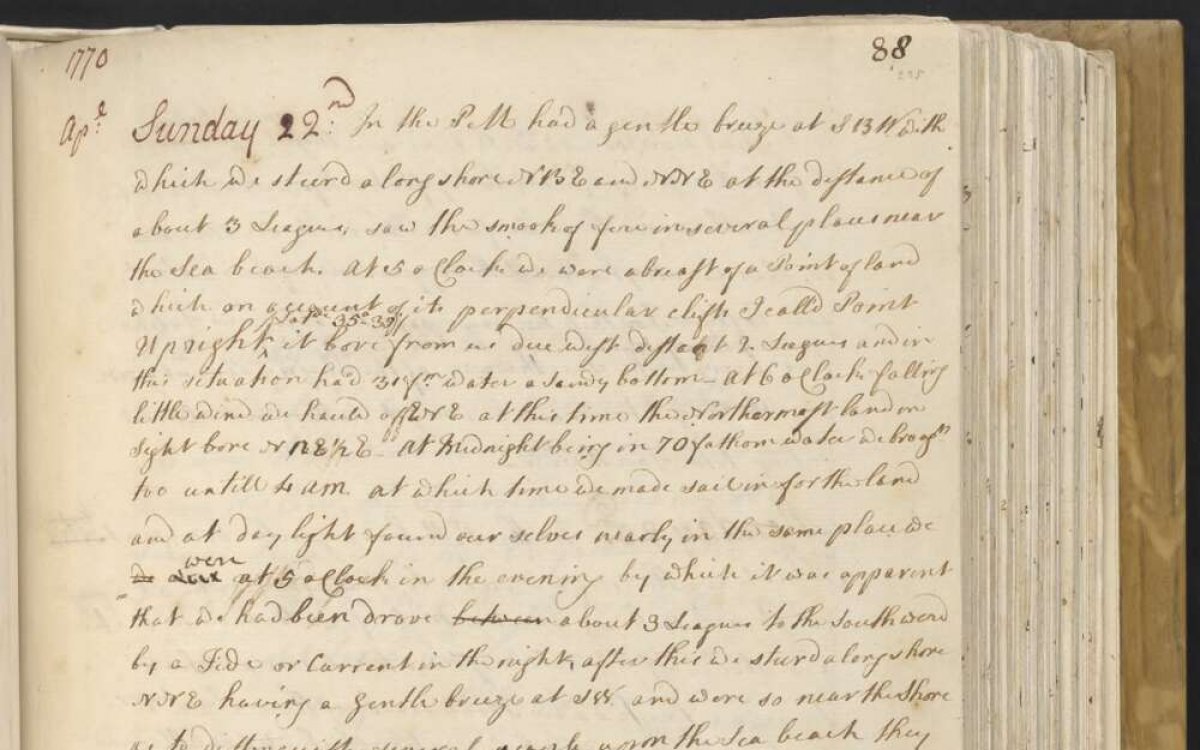
Cook, James, 1728-1779 & Hutchinson, John & Wallis, Samuel, 1728-1795 & Bolckow, Henry William Ferdinand, 1806-1878. (1768). Journal of H.M.S. Endeavour, 1768-1771 [manuscript]. http://nla.gov.au/nla.obj-228958440
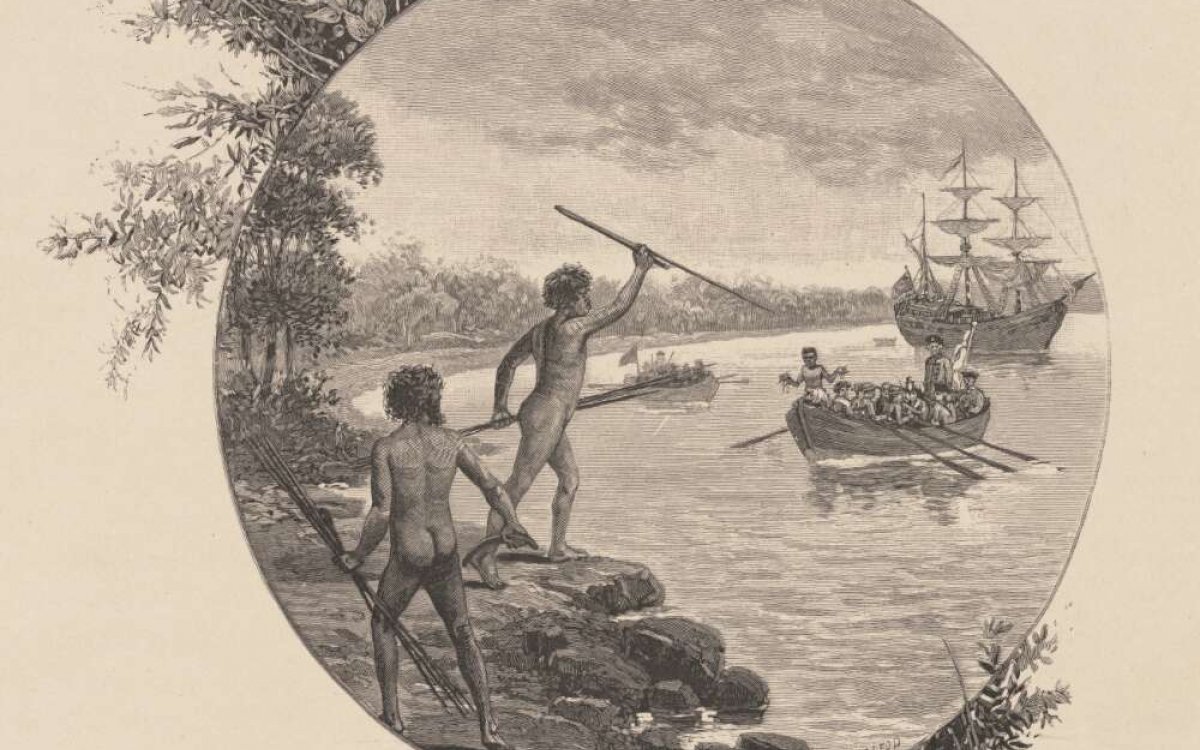
Macleod, W. (William), 1850-1929. (1888). Natives opposing Captain Cook's landing / W. MacLeod. http://nla.gov.au/nla.obj-145314525
at 5 oClock in the evening by which it was apparent that we had been drove between about 3 Leagues to the Southward by a Tide or Current in the night, after this we steerd along shore NNE having a gentle breeze at SW. and were so near the Shore as to distinguish several people upon the Sea beach they appear’d to be of a very dark or black Colour but whether this was the real colour of their skins or the C[l]othes they might have on I know not - At Noon we were by observation in the Latitude of 35°..27’ and Longde 209°..23’. Cape Dromedary bore So 28° West distt 19 Leags a remarkable peaked hill laying inland the top of which look’d like a Pigeon house and occasioned my giving it that name
Murramarang man Victor Channell speaks about his community of Ulladulla and their connection with James Cook.
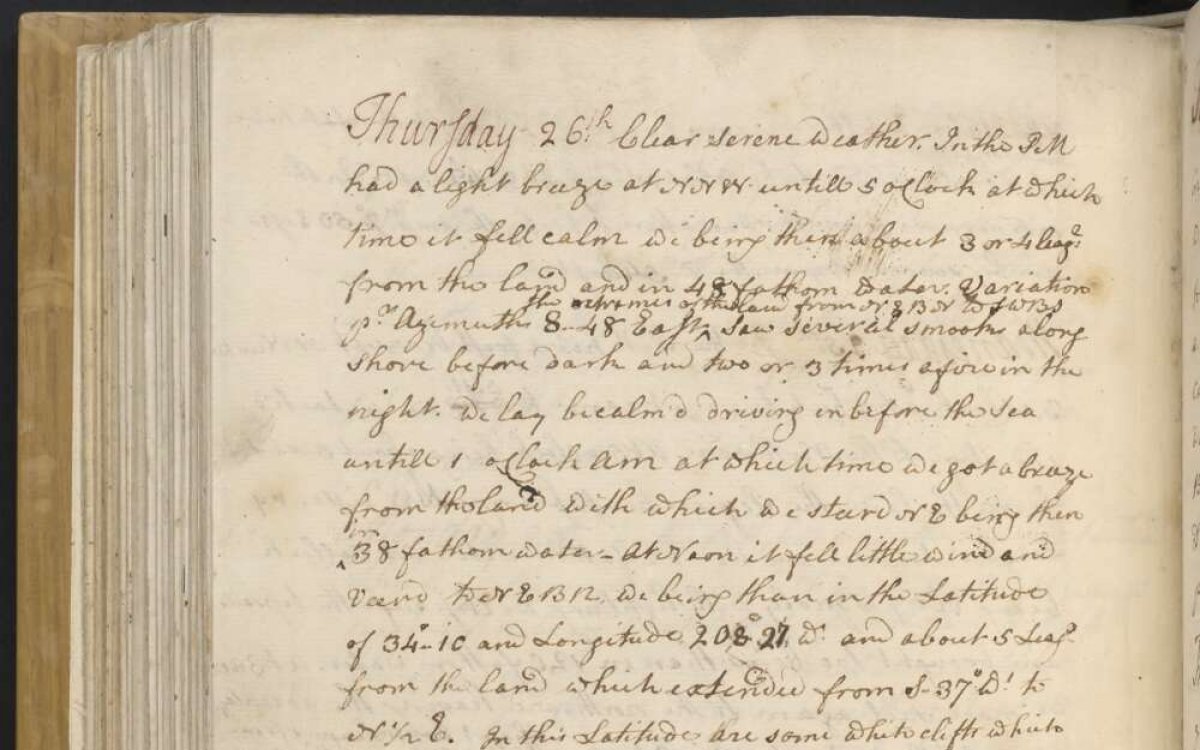
Cook, James, 1728-1779 & Hutchinson, John & Wallis, Samuel, 1728-1795 & Bolckow, Henry William Ferdinand, 1806-1878. (1768). Journal of H.M.S. Endeavour, 1768-1771 [manuscript]. http://nla.gov.au/nla.obj-228958440
Saw several smooks along shore before dark and two or 3 times afire in the night. we lay becalm’d driving in before the Sea untill 1 oClock AM at which time we got a breeze from the land with which we steer’d NE being then in 38 fathom water - At Noon it fell little wind and Veerd to NEBN, we being than in the Latitude of 34°..10’ and Longitude 208°.27’ Wt and about 5 Leags from the land which extended from S-37° Wt to N1/2E. In this Latitude are some white clifts which rise perpendicularly from the sea to a moderate height
Murramarang man Shane Carriage speaks about his community of Ulladulla and their connection to James Cook.
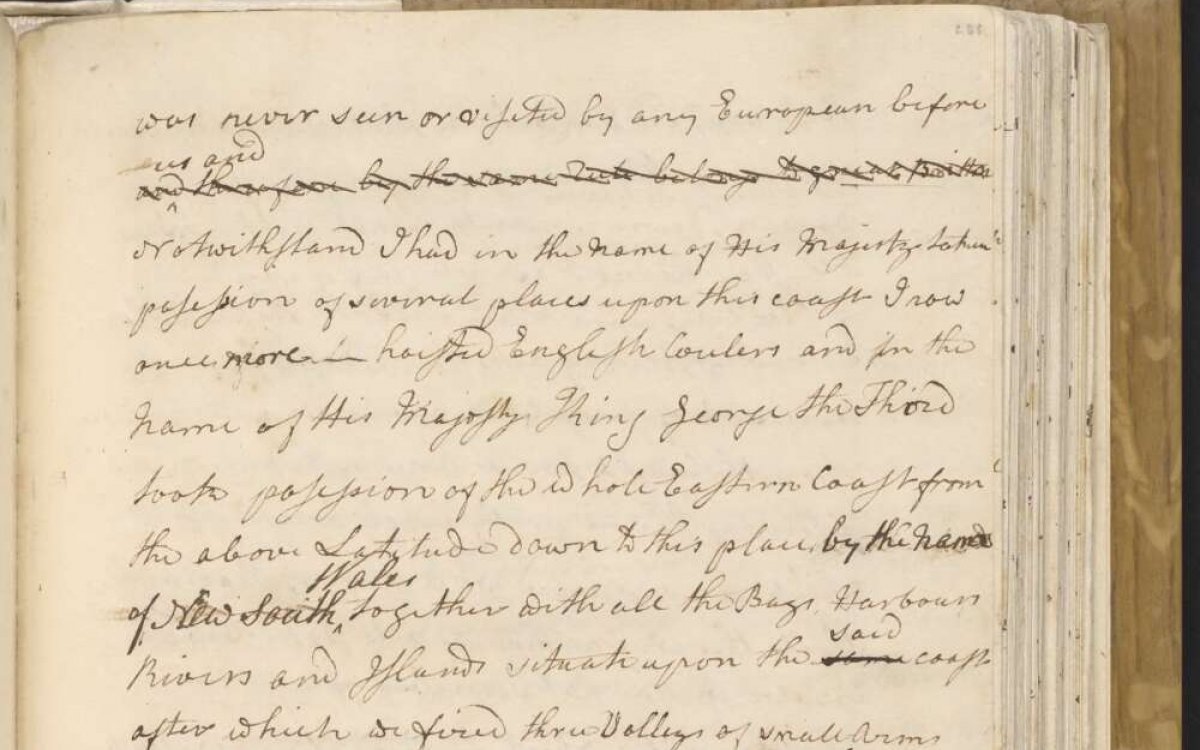
Cook, James, 1728-1779 & Hutchinson, John & Wallis, Samuel, 1728-1795 & Bolckow, Henry William Ferdinand, 1806-1878. (1768). Journal of H.M.S. Endeavour, 1768-1771 [manuscript]. http://nla.gov.au/nla.obj-228958440
Cook made his first Australian landfall at Point Hicks on 19 April 1770 and spent the next 4 months taking bearings and observations. On Possession Island, north of Cape York, on 22 August 1770, Cook claimed possession of the east coast of Australia in the name of King George III, giving the British Crown exclusive rights to negotiate future settlement sites via treaty with the Indigenous peoples:
I now once more hoisted English Coulers and in the Name of His Majesty King George the Third took possession of the whole Eastern Coast from the above Latitude down to this place by the name of New South Wales.
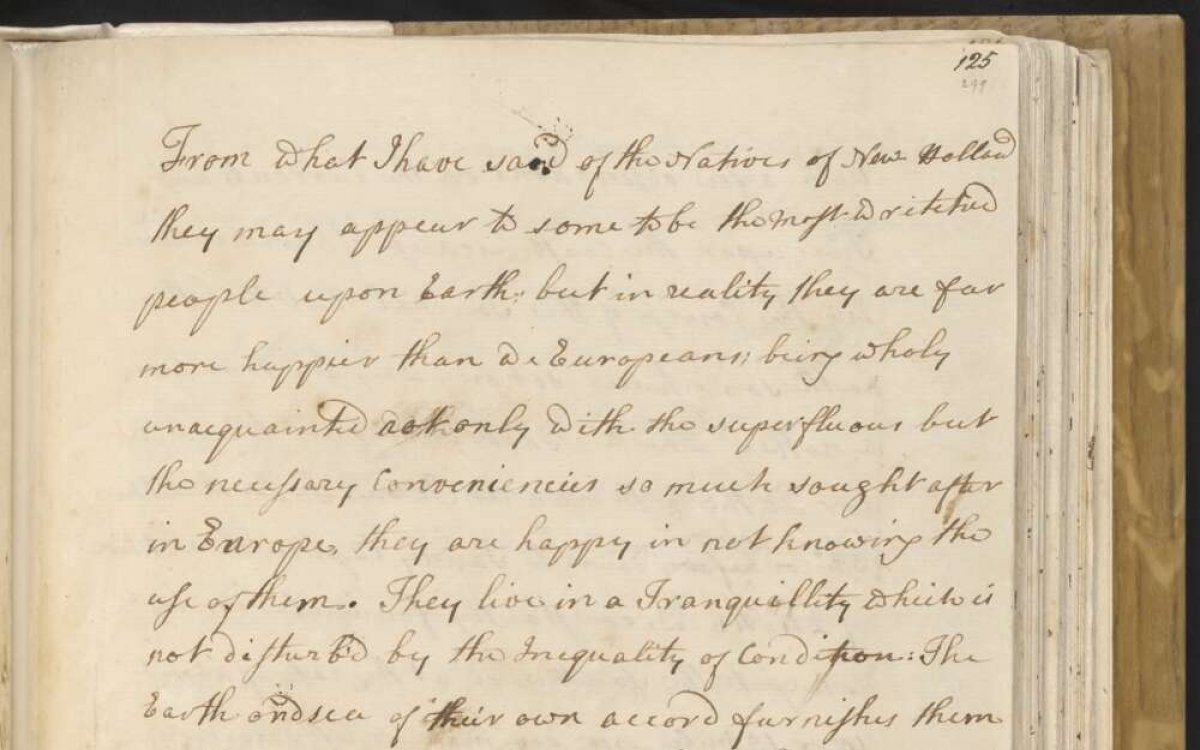
Cook, James, 1728-1779 & Hutchinson, John & Wallis, Samuel, 1728-1795 & Bolckow, Henry William Ferdinand, 1806-1878. (1768). Journal of H.M.S. Endeavour, 1768-1771 [manuscript]. http://nla.gov.au/nla.obj-228958440
From what I have said of the Natives of New Holland they may appear to some to be the most wretched people upon earth, but in reality they are far more happier than we Europeans; being wholy unacquainted not only with the superfluous but the necessary conveniencies so much sought after in Europe, they are happy in not knowing the use of them. They live in a Tranquillity which is not disturb’d by the Inequality of the Condition
Further Reading and Resources
View the original (digitised) Endeavour journal.
View a searchable transcript of the Endeavour journal.
View a searchable transcript of Joseph Banks’ journal.
View searchable transcripts of other manuscripts related to the Endeavour voyage.
Activities
- Cook’s diary entry for the 23 August 1770, in noting that the ‘Natives of New Holland … are far more happier than we Europeans’, clearly recognises the presence of Aboriginal people. Nonetheless, Cook subsequently took possession of an ‘empty’ land. Assess, with reference to this passage in Cook’s diary, the validity of the concept of terra nullius.
- The videos above provide Indigenous perspectives on contact with Cook in 1770. Investigate similarities and differences between these accounts and the manuscript sources created by the ship’s party of the Endeavour. What are some of the characteristics of each type of source (Indigenous oral tradition, explorer’s manuscript journal etc.) that might influence its content? Why might there been a tendency in the past to prioritise one type of source over another?
